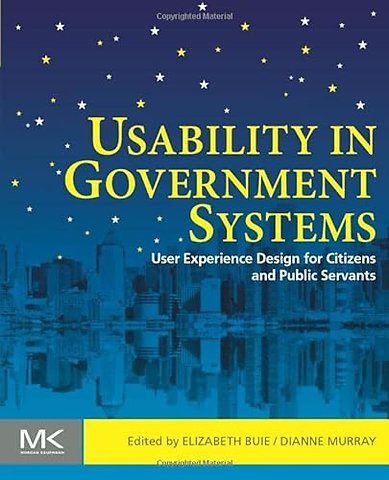Usability in Government Systems
User Experience Design for Citizens and Public Servants
Paperback Engels 2012 9780123910639Samenvatting
As a usability specialist or interaction designer working with the government, or as a government or contractor professional involved in specifying, procuring, or managing system development, you need this book. Editors Elizabeth Buie and Dianne Murray have brought together over 30 experts to outline practical advice to both usability specialists and government technology professionals and managers.
Working with internal and external government systems is a unique and difficult task because of of the sheer magnitude of the audience for external systems (the entire population of a country, and sometimes more), and because of the need to achieve government transparency while protecting citizens’ privacy.. Open government, plain language, accessibility, biometrics, service design, internal vs. external systems, and cross-cultural issues, as well as working with the government, are all covered in this book.
Specificaties
Lezersrecensies
Inhoudsopgave
Rubrieken
- advisering
- algemeen management
- coaching en trainen
- communicatie en media
- economie
- financieel management
- inkoop en logistiek
- internet en social media
- it-management / ict
- juridisch
- leiderschap
- marketing
- mens en maatschappij
- non-profit
- ondernemen
- organisatiekunde
- personal finance
- personeelsmanagement
- persoonlijke effectiviteit
- projectmanagement
- psychologie
- reclame en verkoop
- strategisch management
- verandermanagement
- werk en loopbaan
